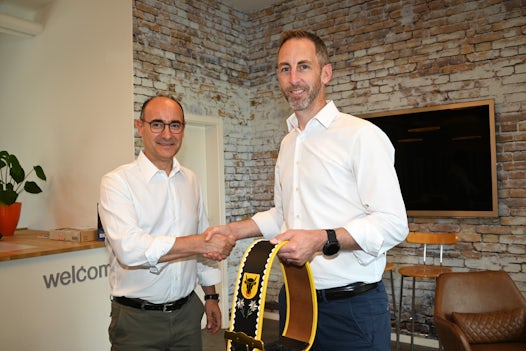
The IT trends for 2023
From the metaverse via AI to “As a Service”
Dec 13, 2022

Which IT trends will shape the new year? How can companies create the most added value? And what action is needed to remain competitive in the future? Datwyler IT Infra has identified five important technology trends which companies should keep an eye on now.
#1 Metaverse: new opportunities for business
Many people are still sceptical about the metaverse. But it does provide companies with opportunities: avatars and chatbots to improve customer care, gamification for training courses, or augmented reality (AR) for more shopping experience. Gartner predicts that by 2027 over 40 percent of the major companies worldwide will use a combination of Web3, AR-Cloud and digital twins in metaverse-based projects. “The metaverse offers companies opportunities to network with customers in an unusual way and boost sales,” says Ralf Klotzbücher, Datwyler IT Infra’s VP Sales Europe. “It is worth sounding out which options are the most promising for one’s own company.”
#2 Sustainability needs a framework
The issue of sustainability is at the heart of almost all business decisions. But how does efficient implementation succeed in practice? According to Gartner companies need a “Sustainable Technology Framework”, in other words a framework consisting of various digital solutions which assist them in attaining their sustainability goals. These include analytics and AI in addition to goods tracking and specified software solutions for company management. “A comprehensive energy concept is important in achieving sustainability goals. It is also important to improve energy efficiency in data centres,” adds Ralf Klotzbücher. “With compact edge data centres companies are well positioned to save energy and costs in this area.”
#3 Forging ahead: artificial intelligence
Artificial intelligence (AI) is establishing itself in an increasing number of company spheres, from production to customer contact. Many companies, however, are not managing their AI risks adequately. According to Gartner 41 percent have already been affected by a breach of privacy or a security issue caused by AI. This means that It is advisable to implement functions which can guarantee reliability, trustworthiness, security, and data protection when using AI. Cooperation between different business divisions is necessary, as is the use of adaptive AI systems. These use data-based real time feedback to effect dynamic change in their own learning and to adapt to the goals.
#4 Stable and secure thanks to digital immune systems
The development of resistant applications is steadily gaining importance due to digitisation. However, classic approaches to software development are not helpful in creating scaleable, secure and stable systems. Methods such as observability, site reliability engineering and chaos engineering are needed to optimise the protection of infrastructures and data. The interplay of analytics and AI simplifies the testing of tools and at the same time improves the end-to-end security of the whole supply chain. Gartner estimates that by 2025 companies investing in digital immunity will have reduced their system failures by up to 80 percent.
#5 Growing As-a-Service processes and smart products
According to International Data Cooperation (IDC) there will be a major focus on As-a-Service products and processes in future. Physical resources like hardware and software will therefore no longer need to be purchased, and the cost of system maintenance and renewal can also be dispensed with. This reduces operating burdens and gives companies faster access to innovation. “Increasing requirements in terms of the agility, automation and orchestration of IT result in companies making use of As-a-Service offerings with increasing frequency,” explained Ralf Klotzbücher. IDC estimates that by 2024 companies will use more than three quarters of their applications and more than 50 percent of their data centre infrastructure “As-a-Service”. “Many existing IT and OT infrastructures are not designed for this and so need to be overhauled,” says Klotzbücher.


